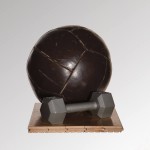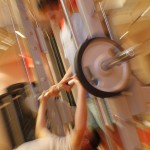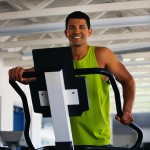 How To Eat Clean While Eating Gluten-Free
How To Eat Clean While Eating Gluten-Free
Clean eating is a lifestyle from the 1960′s that revolves around eating whole foods that are minimally processed or refined. It sounds easy doesn’t it? Sadly so much of our food now is overly processed or handled that adopting this lifestyle can take some work. However, if you must eat gluten-free clean eating can be a natural progression.
Clearly you must avoid processed foods along with preservatives, artificial ingredients, trans fats and chemicals. Add more dishes that include raw and fresh fruit and vegetables. Base your diet around vegetables, fruits and gluten-free grains, beans, legumes, lean or vegetarian proteins and fats. Add unprocessed nuts to salads and use them as snacks.
With clean eating you don’t try to eat less… you strive to eat more. Eat three full meals and at least two snacks a day. The goal is to keep yourself full of healthy, clean and gluten-free food so that you keep your energy level throughout the day.
Choose organic food as much as you can find and afford. Go to farmer’s markets on the weekend and look for fruit and vegetables that is grown without pesticides. Be brave and add new fruits and vegetables to your diet as often as possible.
Ditch refined sugar by eliminating soda, candy, baked goods and ice cream. Use honey or maple syrup in recipes where sugar is included. If you must use artificial sweeteners choose a product with stevia in it.
Drink water all day long while avoiding fruit juices, soda, sweetened coffee drinks. You can also drink tea, coffee and milk but minimize how much coffee drink. Reduce or eliminate alcohol.
Consider taking your own food to gatherings or eat before you leave. Avoid fast food and fried food. If you must eat on the go without packing a meal then go for a salad and ask for no croutons and use an oil and vinegar dressing.
Try keeping snacks on hand that fit both your gluten-free and clean eating lifestyle and are easy to eat. Some of our favorites are bananas, nuts, hard boiled or deviled eggs, bell pepper slices, carrots, apples and celery with nut butter, popcorn, pumpkin seeds, Edamame, roasted chick peas and tuna packed in sunflower oil or water.
To optimize your gluten-free clean diet start exercising every day. If you are out of shape start by adding walking to your day and move up to more vigorous exercise when you are ready. As always consult your physician before making any dietary or exercise related changes in your life.
Gretchen Scalpi is a Registered Dietitian, author and Certified Wellcoach® who has celiac disease and know the challenges of eating right with this condition. Gretchen is pleased to announce her new online program “Gluten-free Bootcamp”, designed to help those who need to follow the gluten-free diet. If you are new to the gluten-free lifestyle for medical or health reasons, you’ll want to attend Gretchen’s new free webinar “Five Things You Should Know Before Going Gluten-free“
 Subscribe
Subscribe







